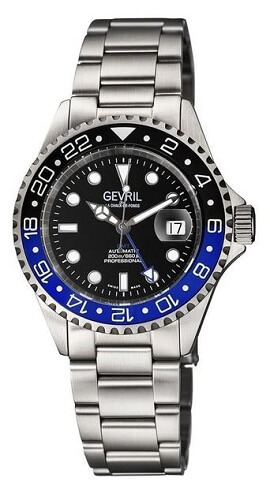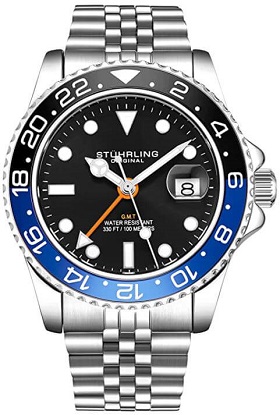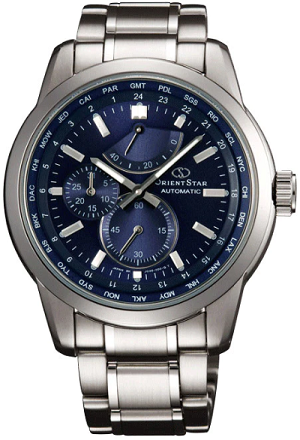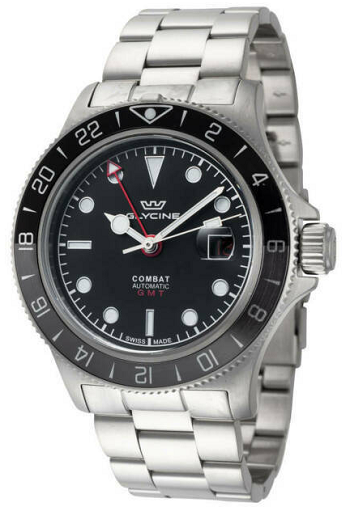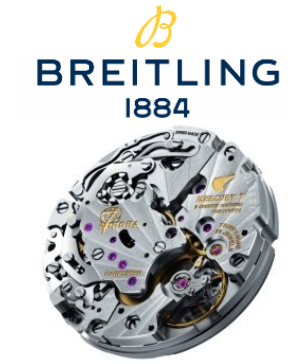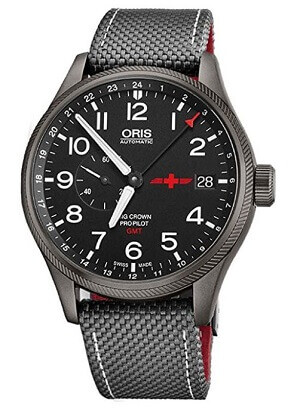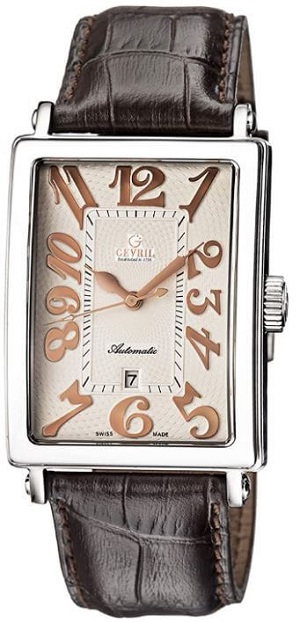Last Updated on June 19, 2021 by swisswatchreview
In the past, people relied heavily on watches as their primary personal timekeepers. In the modern world, phones and tablets have largely replaced the practical need for watches. However, that has not made watches entirely obsolete. In fact, some watches even offer additional functionality that is timeless for modern buyers. This is the case with the GMT watch.
What Is a GMT Watch?
While a normal watch will display one time, a GMT watch features additional hands to tell the time in numerous zones. In other words, with a GMT watch, you can see your local time in comparison to other time zones. These times are differentiated by distinct hands on the watch’s face.
The GMT in the name is a reference to Greenwich Mean Time. This is the official mean solar time as measured by the Royal Observatory in Greenwich. For many years, GMT has been an official standard in telling time, which is why having a watch that lines up with that measurement has traditionally been appealing.
In short, a GMT watch does more than tell you local time. A GMT watch allows you to track multiple time zones simultaneously. This added versatility can be surprisingly useful.
The Origin of GMT Watches
The concept of a GMT watch is inherently linked to the development and proliferation of time zones. Time has traditionally been told by the sun, which means that every location had a distinct local time. However, as technology improved, the need for standardized time-telling became apparent.
Time zones first became prevalent in North America with railway expansion in the 1800s. The continent was broken up into four zones. Similar action was taken in Europe by 1893. Then, the effort turned global. Time zones were delineated with the prime meridian as a way to differentiate time from one hemisphere to the next. The process was surprisingly contentious, and it was 1884 when the International Meridian Conference established the Greenwich meridian as the official starting point.
For many years, Greenwich Mean Time was the official world time. In 1972, it was replaced by Coordinated Universal Time. Even so, GMT is still used by clocks and electronic devices. This background was largely influential in the development of GMT watches in the 1950s.
The Early Days of GMT Watches – Rolex GMT

As pilots started to traverse the globe with more regularity, the limitations of standard timepieces became evident. The versatility of a watch with multiple time zones at a single glance was readily apparent. The first successful GMT watch was launched in 1955. It was the Rolex GMT Master. This watch became the official watch of Pan American Airlines.
This first generation of GMT watches featured two time zones. These time zones were managed by a secondary hand on the watch face. This was the GMT hand. To set these watches, the 24-hour bezel could be turned so that that GMT hand was pointed at the second desired time zone.
These watches were further improved with two-toned bezels. These bezels were differentiated in color to make it easier to tell night from day. The early GMT watches were limited because the GMT hand was fastened to the hour hand. The first generation of GMT watches could only read two time zones.
Ongoing Evolution of GMT Timepieces
These early watches were quite revolutionary. However, the technology quickly evolved, and it continues to become more versatile with modern technological upgrades.
The first major innovation for GMT watches was an independent GMT hand. By separating the GMT hand from the hour hand, the watch was much easier to set. Specific user delineations have varied from brand to brand. For example, the Rolex GMT Master II and the Seamaster 300M GMT both allow the minute hand to be set simultaneously alongside the GMT hand before the hour hand is set. However, other models leave the GMT hand completely independent. This was seen in the Hamilton Jazzmaster in particular.
You can set modern GMT watches with three time zones. This is possible when your GMT watch has a 24-hour rotating bezel. This bezel was intended to guide the GMT hand. However, the bezel can be set independently. Thus, three time zones can be evident on the face. This trick takes some practice, but loyal GMT watch fans have mastered the practice.
Modern Applications for GMT Watches
While pilots and flight attendants may still be ideal customers for GMT watches, they are not the only ones who might benefit from one of these timepieces. Worldwide travel is even more common today than in the 1950s when these watches were first released. For frequent travelers, a GMT watch can be absolutely essential.
Specifically, you can opt for a traveler’s GMT watch. This variation of the GMT watch comes with a 12-hour hand that can be moved one hour at a time. Therefore, when traveling, you can change your time quickly to adjust to the local time zone. Unfortunately, these watches have cumbersome date features. They are also pretty expensive.
Beyond travelers, there are still people who need to navigate time zones successfully. Today’s world is intimately connected. Talking to people across the country or overseas is common. An office GMT watch can be a real asset.
These watches are ideal for people who want to know other time zones even while they stay local. These watches allow the 24-hour hand to be moved in one-hour increments. Most office GMT watches enable the crown to move backward in order to tweak the date. With these watches, changing your local time is more difficult, but the price tag is often much better than other GMT timepieces.
The Final Word on GMT Watches
When it comes to GMT watches, you will pay more for added functional and technical nuances. For some people, the price will be substantial enough to second-guess the purchase. However, that does not mean that a GMT watch might not be the right purchase for you. Even though most GMT watches are quite expensive it is possible to find some more affordable options, even some under 100 dollars.
If you are a traveler or work in an industry that communicates regularly overseas, then a GMT watch might still be a very practical investment. Moreover, with multiple hands, these watches are particularly striking. In many cases, the bezels are crafted in multiple colors and styles to create a fully dynamic look. Plus, the advanced creation of these watches ensures that they are truly sophisticated timepieces. You can expect high performance and unparalleled longevity because these are horological masterpieces in most cases.
In the end, a GMT watch is a quality timepiece that may offer superior form and function. You can weigh your purchase based on your needs, preferences and budget.

